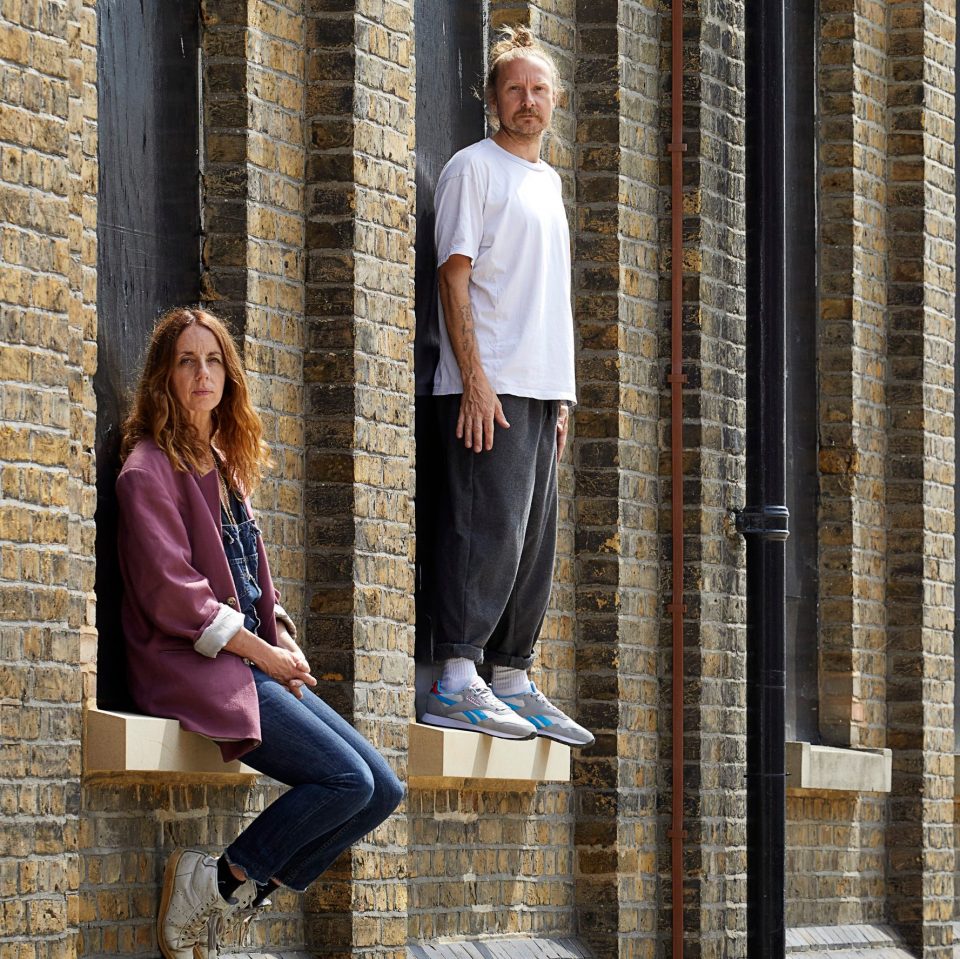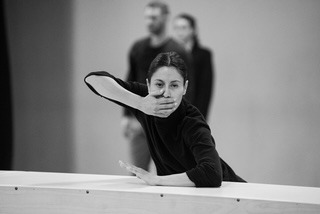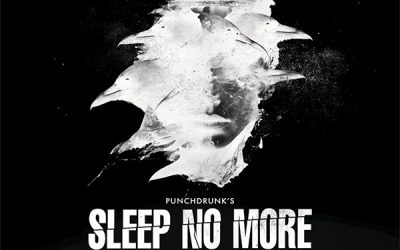By Claire Allfree | 22 March 2022
The Telegraph
Immersive-theatre pioneers Punchdrunk are back with their epic new take on the Trojan War. Its directors explain what’s in store.

Inside two former military arsenals in Woolwich, a city is rising from the dust. Where once weapons and ammunition were manufactured for the Army, now bars are springing up, flower shops and a royal palace. There is a child’s bedroom stuffed with dolls and a bedsit with 50 pairs of knickers on a line. “We wanted the first story we told in our new permanent home to connect with the birth of Western theatre,” says director Felix Barrett, as we walk across a floor covered in ash. “So when the Woolwich Arsenal became available as a space, the Trojan War was a slam dunk.”
Barrett’s pioneering immersive theatre company, Punchdrunk, is back in London with its first major production in nearly a decade. A three-hour spectacular drawing on Aeschylus, Homer and Euripides, The Burnt City will immerse audiences simultaneously in the stories of the fall of Troy and the fall of the house of Agamemnon across two vast rooms that resemble The Iliad meets Minecraft.
As ever in a Punchdrunk show, the actors will remain silent and the audience, wearing masks, will move around at will, piecing together their own version of events in the way one might play a video game, perhaps by following Iphigenia [spoiler: it ends badly], hanging out with Hades or simply by opening a door.
At the centre are the twin narratives of Hecuba and Clytemnestra, both queens of different cities, but you might find yourself equally caught up in the story of Demeter, who owns the flower shop, or even the Danaids, the 50 daughters of Danaus and owners of those knickers. “Whether the audience are scholars of the classics or kids who like their Xbox,” says Barrett, “there is no right or wrong way to experience this show.”
The Burnt City is Punchdrunk’s most ambitious production to date in terms of sheer size, yet it arrives at a pivotal point in their history. The company is now 22 years old. The large-scale, find-your-own-adventure-style theatre it pioneered with shows such as Faust (2006), The Masque of the Red Death (2007) and The Drowned Man (2013), transforming disused urban spaces into multiple, labyrinthian, immaculately realised worlds, is now commonplace.
While the company has been busy establishing itself as a global brand, most notably with their acclaimed riff on Macbeth, Sleep No More, which opened in New York in 2011 and in Shanghai in 2016, a host of pale imitators have sprung up in their wake. Secret Cinema, The Great Gatsby, Doctor Who: Time Fracture, the woefully bad The Wolf of Wall Street – much of immersive theatre now resembles office-party-style entertainment, with the showy stage sets, good-time atmospherics (and a bar selling overpriced drinks) combining to produce a glib, formulaic theatricality. Can Punchdrunk rescue a genre that seems to have hit a creative wall?
Barrett thinks they can. “Part of the reason we have been away from London for so long is that it’s taken us years to find a space big enough for our plans,” he says – the Woolwich buildings, part of the ongoing regeneration of the former arsenal, will combine a permanent performance space with a “laboratory” to test out new ways of immersing audiences deeper into the narrative, including virtual reality, body scanning and projection mapping.
In 2017, the company produced Kabeiroi, an adaptation of a play by Aeschylus, which used smartphones to lead audiences through a treasure-hunt-style narrative across London. “Performed” for only two members of the public at a time, and lasting more than six hours, the production was experienced by a limited number of people. “Kabeiroi was a baby step in how you might scale a show that ‘gamified’ real life,” says Barrett.
“We’ve always used gaming techniques in our shows [long-running productions are accompanied by websites that allow users to compare the best routes to follow] and we are currently very interested in how you might take a show like The Burnt City out of the building and on to the streets. All this is for the future; the logistics are boggling. But it’s the liveness that’s important; those moments of human connection only theatre can bring. I’ve no interest in VR goggles, for instance. For me, the question is how you make the audience the hero of their own story in ways that are tech-enabled, but also happening in real life.”
None of this tech experimentation comes cheap. Punchdrunk are commercially savvy and in the past have worked on promotional campaigns for several high-profile brands, including Stella Artois and Louis Vuitton. The Burnt City, meanwhile, is sponsored by Porsche. Yet these hook-ups have prompted accusations from some quarters of selling out, of the company losing sight of what it stands for. Barrett is having none of it.
“Each time we’ve worked with a brand, we’ve done so to further an artistic idea. Yes, we get an Arts Council grant. But if Stella Artois come to us to create a story involving cars travelling across London, then, of course, we are going to say ‘Yes’. We cracked new ideas in that campaign that fed into Kabeiroi.”
“Punchdrunk has always been entrepreneurial,” points out Maxine Doyle, the company’s co-director and choreographer. “Otherwise, we would still be making small work in cupboards. Because of our size we can employ 300 people to work on this show. I always find it shocking when we are criticised for that.” This strength in numbers is very evident in The Burnt City: the set, for one thing, is the size of a small housing estate. And if the tech is the next step, right now the company is aiming to perfect what it does best – combining rigorous storytelling (the classicist Emma Cole has been a consultant) with the thrill of unexpected encounters (there are 16 possible “one-on-ones” between an audience and a character) – to strive for what Barrett calls the “ecstatic transformation”, in other words, encouraging audiences to leave aside their inhibitions and open themselves to new experiences.
Sometimes, though, this can go too far. In 2018, the company was rocked by allegations that cast members in a New York production of Sleep No More had endured inappropriate sexual contact from audience members. Safety protocols were re-evaluated; new security systems were put in place and, for the first time, an intimacy coordinator has been employed to work with the actors on The Burnt City. But it’s clear the incidents have left the company bruised.
“The performers have a very strict set of actions to take should they ever feel compromised or uncomfortable,” says Doyle. “And audience members aren’t allowed in if they are intoxicated, for instance. But audiences are human, they sometimes misbehave.”
“In Greek theatre, the masque, which the audience always wears in our shows, is a neutralising device, there to show how physicality can convey emotion,” adds Barrett. “And it can definitely convey when someone is drunk. But we try to treat our audiences as adults. It’s sad if we have to say to them in advance, ‘Don’t touch people’. Sometimes infantilisation can breed bad behaviour.”
There should be nothing infantilising about The Burnt City: the material should see to that. And with the ongoing horrors in Ukraine, it’s acquired an awful new resonance. “The original plays demand a sensibility and a feeling about war and where we sit with that,” says Barrett. “They couldn’t be more timely about the impact of war on families, on what conflict can do and what little it achieves.”
Read this article in the Telegraph online.



